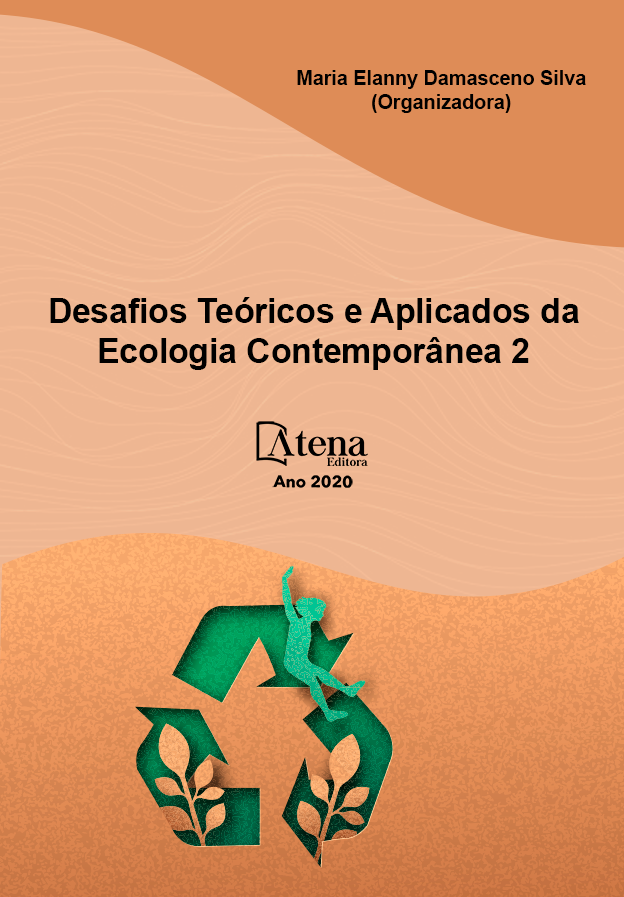
FAUNA DE BETHYLIDAE (CHRYSIDOIDEA) EM CAFEZAIS COM DIFERENTES SISTEMAS DE CULTIVO EM BARRA DO CHOÇA, BA
Os himenópteros parasitoides são um importante elemento da fauna Neotropical devido à sua capacidade de regular população de pragas agrícolas, sendo utilizados com sucesso em programas de controle biológico. Neste contexto, o presente estudo teve como objetivo identificar a fauna de Bethylidae em cafezais com diferentes sistemas de cultivo. O estudo foi realizado em lavouras de café no município de Barra do Choça, BA, em quatro sistemas de cultivo de café variedade Catuaí, com a combinação de dois fatores - arborização com grevíleas (Grevillea robusta) x pleno sol e sem uso de agrotóxicos x convencional. A amostragem foi realizada de junho de 2014 a maio de 2016, utilizando armadilhas Moericke, suspensas a 80 cm do solo, contendo álcool a 70% e estas permaneceram no campo por 48h. Os insetos foram triados e identificados no Laboratório de Biodiversidade do Semiárido da Universidade Estadual do Sudoeste da Bahia – UESB campus Vitória da Conquista. Os himenópteros crisidóideos foram separados dos demais insetos, identificados em nível de família e enviados a especialistas para identificação em nível de gênero. A fauna de Bethylidae foi caracterizada qualitativamente e quantitativamente, sendo estimada a riqueza (S), diversidade (H) e Eqüitabilidade (J). Foram coletados 297 indivíduos da família Bethylidae distribuídos em sete gêneros, com pouca variação genérica entre as áreas estudadas. Destes, aproximadamente 52% do total foram coletados no sistema arborizado convencional. O mesmo apresentou valores na análise faunística diferentes dos demais, com o menor valor de J = 0,55 devido à grande dominância do gênero Pseudisobrachium. A riqueza dos gêneros Pseudisobrachium, Apenesia, Goniozus, Dissomphalus, Anisepyris Epyris e Chlorepyris encontrados nos cafezais da Barra do Choça não sofreram interferência do agrossistema adotado, apenas a sua abundância
FAUNA DE BETHYLIDAE (CHRYSIDOIDEA) EM CAFEZAIS COM DIFERENTES SISTEMAS DE CULTIVO EM BARRA DO CHOÇA, BA
-
DOI: 10.22533/at.ed.4952013117
-
Palavras-chave: Broca-do-café, Controle Biológico, Diversidade, Pseudisobrachium
-
Keywords: Coffee borer, Biological Control, Diversity, Pseudisobrachium
-
Abstract:
Hymenoptera parasitoids are an important element of the Neotropical fauna due to their ability to regulate the population of agricultural pests, being successfully used in biological control programs. In this context, the present study aimed to identify the Bethylidae fauna in coffee crops with different cultivation systems. The study was carried out in coffee crops in the municipality of Barra do Choça, BA, using four cultivation systems of coffee ‘Catuaí’ variety with the combination of two factors - grown under grevillea trees shading (Grevillea robusta) x full sun and without the use of pesticides x conventional system. Sampling was carried out from June 2014 to May 2016 using Moericke traps suspended 80 cm from the ground, containing 70% alcohol, which remained in the field for 48 hours. Insects were screened and identified at the Laboratory of Semiarid Biodiversity of the State University of Southwestern Bahia - UESB Vitória da Conquista campus. Chrysidoid hymenopterans were separated from the other insects, identified at family level and sent to experts for identification at gender level. The Bethylidae fauna was qualitatively and quantitatively characterized, estimating its richness (S), diversity (H) and equitability (J). In total, 297 individuals from the Bethylidae family were collected, distributed into seven genera, with little generic variation between study areas. Of these, approximately 52% were collected in the conventional shaded system. It showed values in the fauna analysis different from the others, with the lowest J value of 0.55 due to the great dominance of the genus Pseudisobrachium. The richness of the genera Pseudisobrachium, Apenesia, Goniozus, Dissomphalus, Anisepyris Epyrise Chlorepyris found in coffee crops of Barra do Choça did not suffer interference from the adopted agrosystem, only their abundance.
-
Número de páginas: 15
- Ana Luiza de Jesus Gusmão
- Rita de Cássia Antunes Lima de Paula
- Raquel Pérez-Maluf
- Jennifer Guimarães Silva


